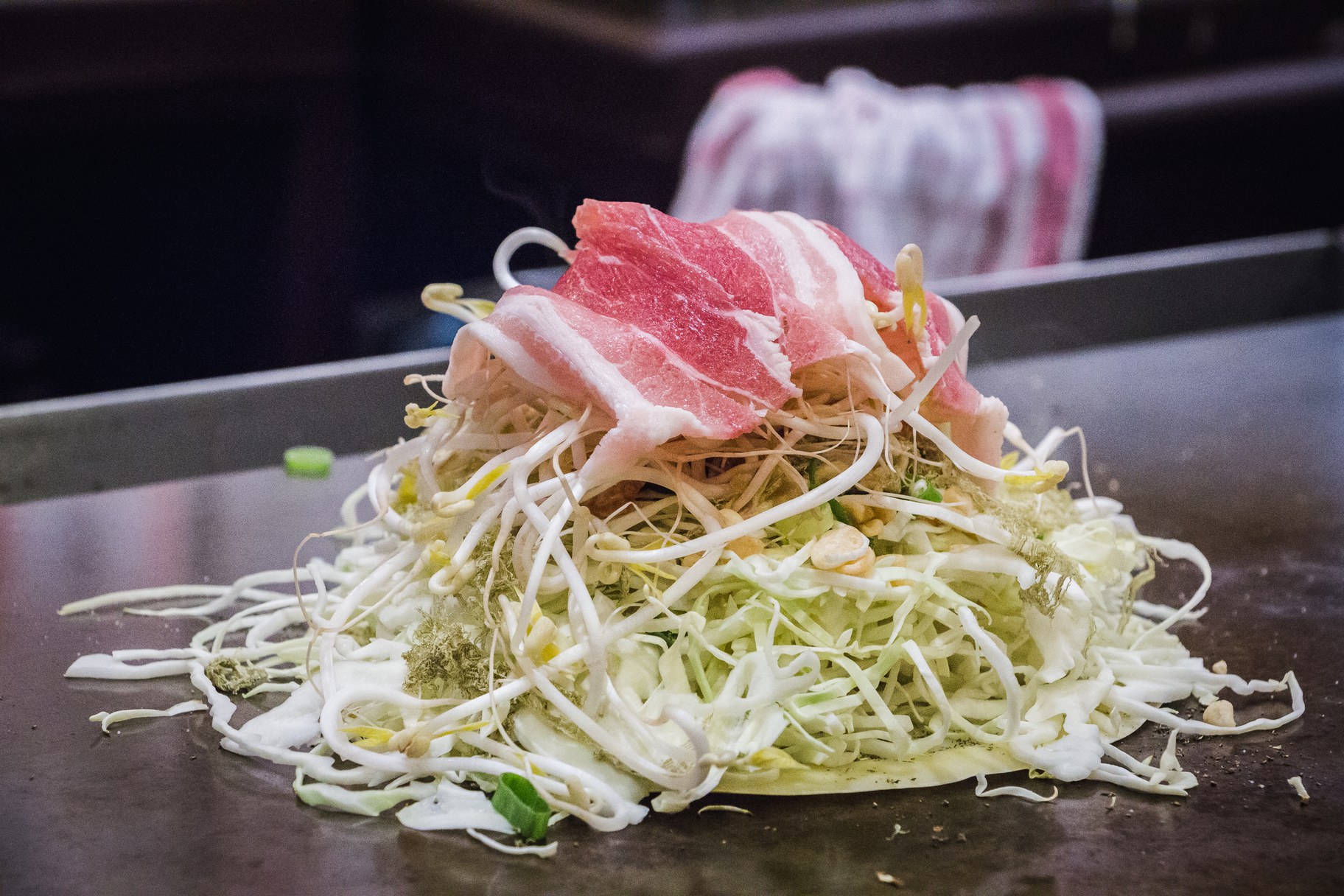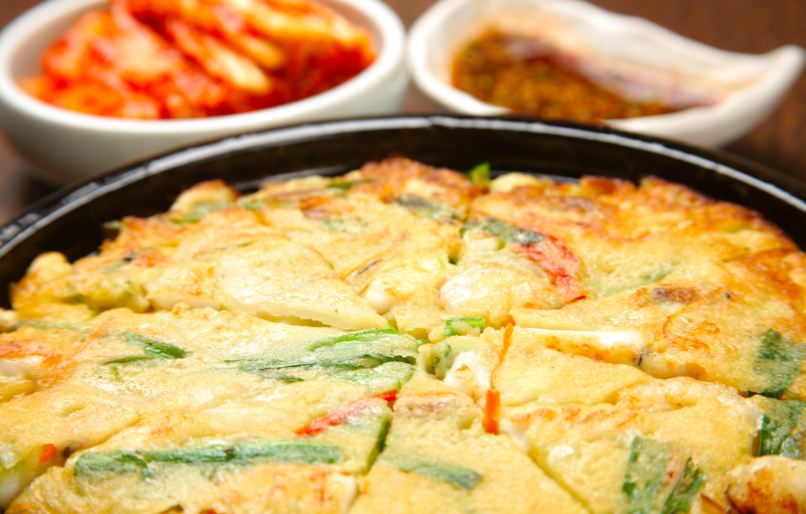Okonomiyaki and jeon may not yet be household names, but in my household, the savory pancakes from Japan and Korea, respectively, are on repeat. Although quite different, each is easy to make and perfectly satisfying for a weeknight meal, or as one element in a more expansive dining experience.
Several years ago, I hosted a student from Japan. Part of the deal was that I supplied her with breakfast and dinner. It was like an assignment to get familiar with a cuisine, so I dug in and taught myself some homey Japanese food with the help of YouTube mentor Namiko Hirasawa Chen of Just One Cookbook.
I visited Japan a couple years earlier and I was initiated into the cult of okonomiyaki. Okonomiyaki is a surprisingly baroque pancake that starts with a crazy amount of shredded cabbage, to which various proteins and cooked tempura batter crumbs are added, then held together with a small amount of batter before being cooked, and then topped with Kewpie mayonnaise and a sweet-sour sauce called Bulldog. The pancake can easily be customized to suit personal preferences, ergo the name, okonomi which means “as you like it,” and yaki meaning “grill.”

A pile of shredded cabbage with a thin pork belly garnish is ready to be flipped to make an okonomiyaki. Photo Shutterstock.
I love okonomiyaki and I got quite good at making them, but it’s actually the Korean jeon that I cook more frequently. The pancake most familiar to Korean restaurant goers is haemul pajeon, the ubiquitous seafood and scallion pancake. It’s delicious and easy to make. But even easier, especially if you always have a jar of kimchi in the house as I do, is kimchijeon or a kimchi pancake.

Made with seafood and scallions, haemul pa-jeon is just one kind of Korean pancake seen on Korean restaurant menus. Photo courtesy of Canva.
Both Korean and Japanese pancakes are so often made at home that there are pancake mixes available for each.
Buchimgaru is the pancake mix for making jeon. Along with all-purpose flour, it includes either corn starch or potato flour, rice flour, baking powder, and spices. The additional flours add the characteristic chewy-yet-crispy texture that make jeon eating such a pleasure to eat. If you’re willing to keep all the extra flours on hand, it’s easy to put together on your own mix.
There are several mixes for okonomiyaki, but I’m careful to always get one with mountain yam or nanaimo in it. When freshly grated, the yam becomes a bit slimy, but it adds a characteristic fluffy quality to the pancakes.
